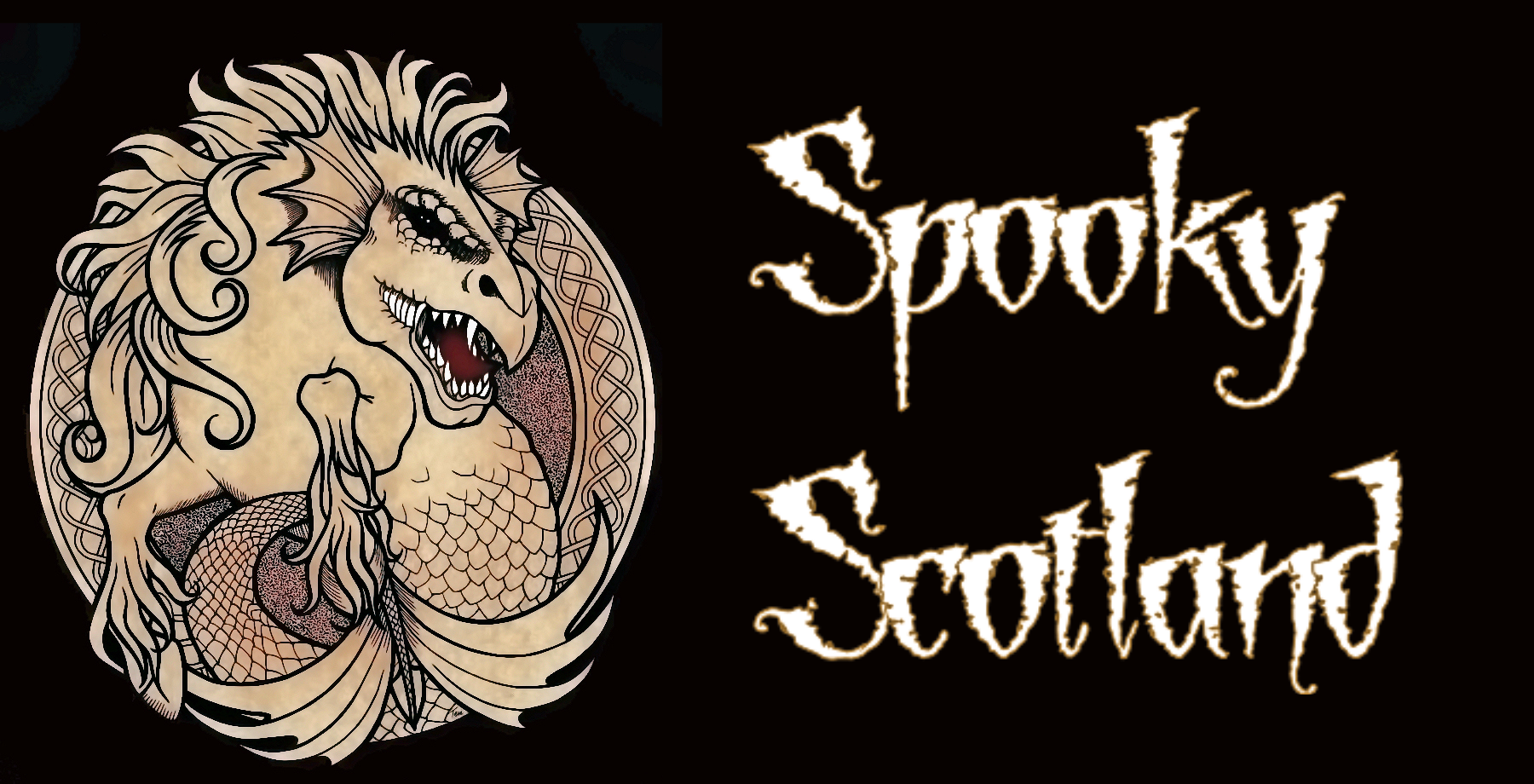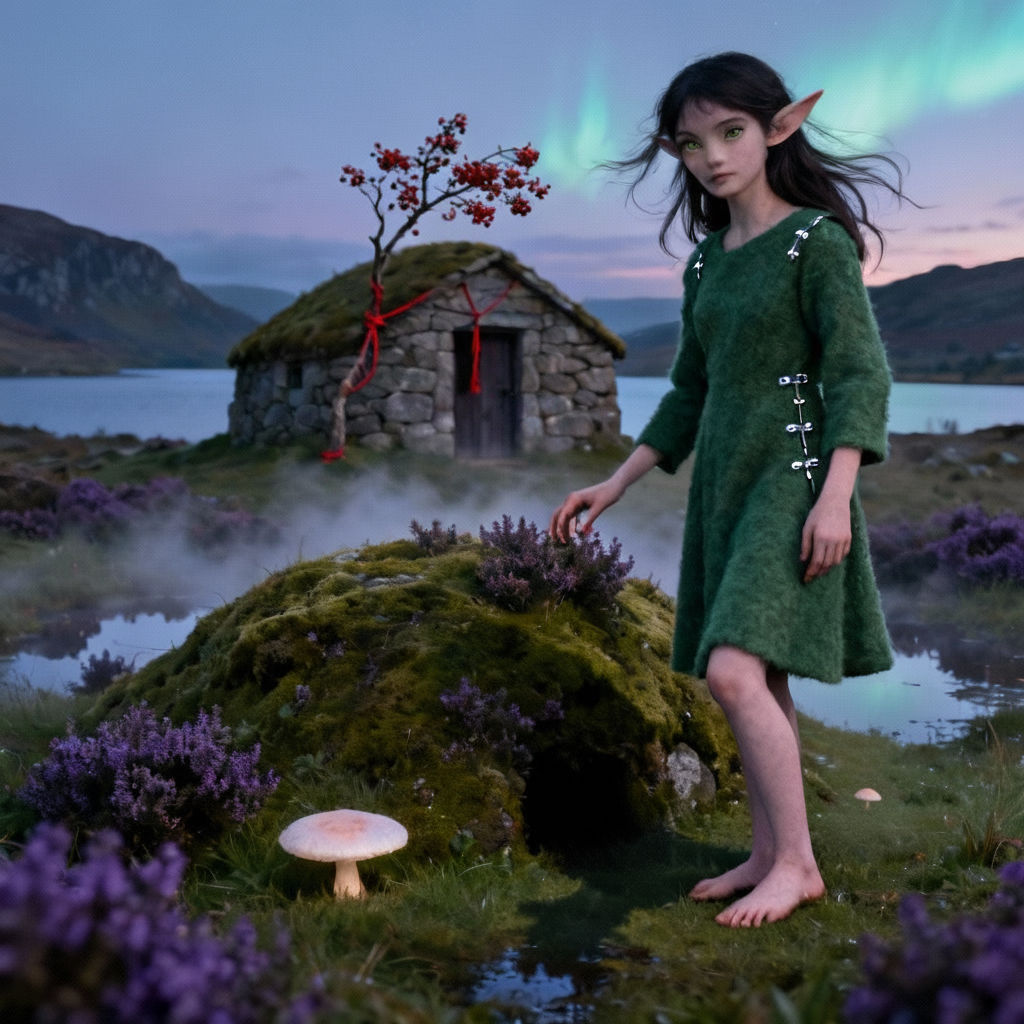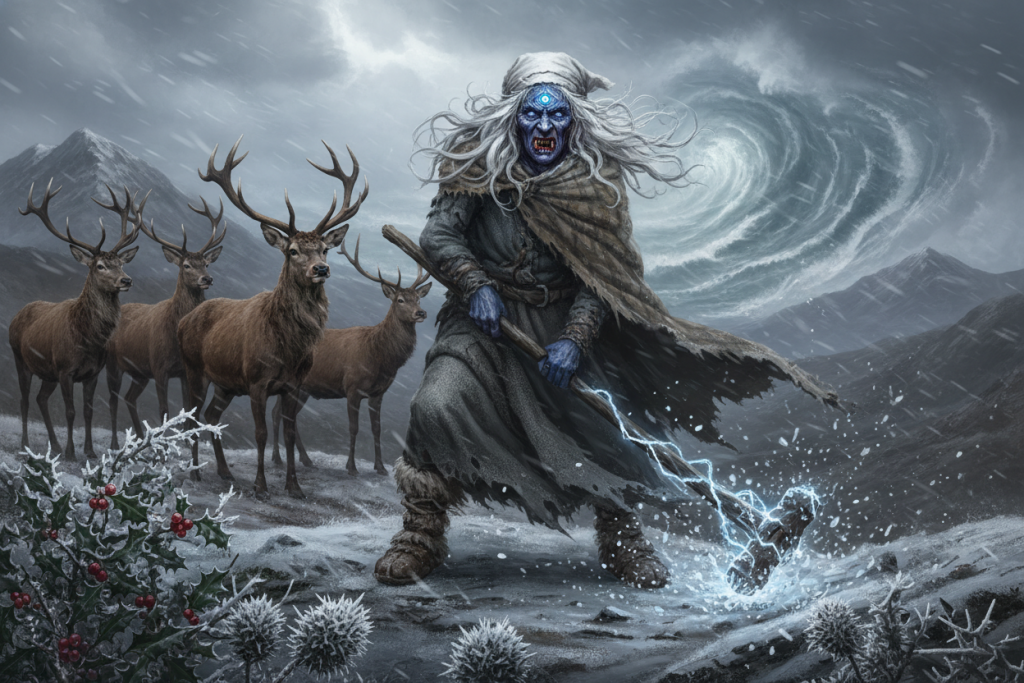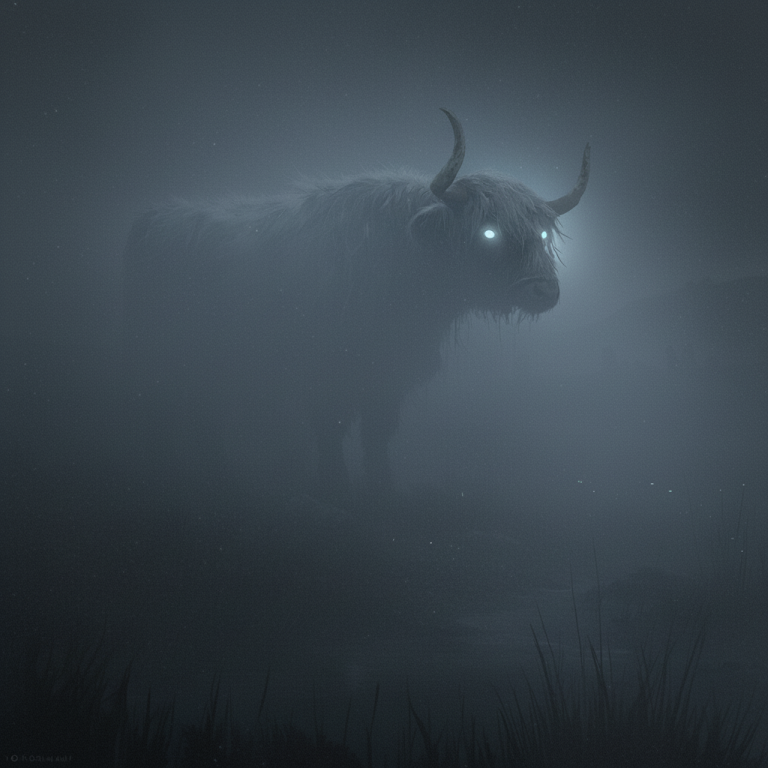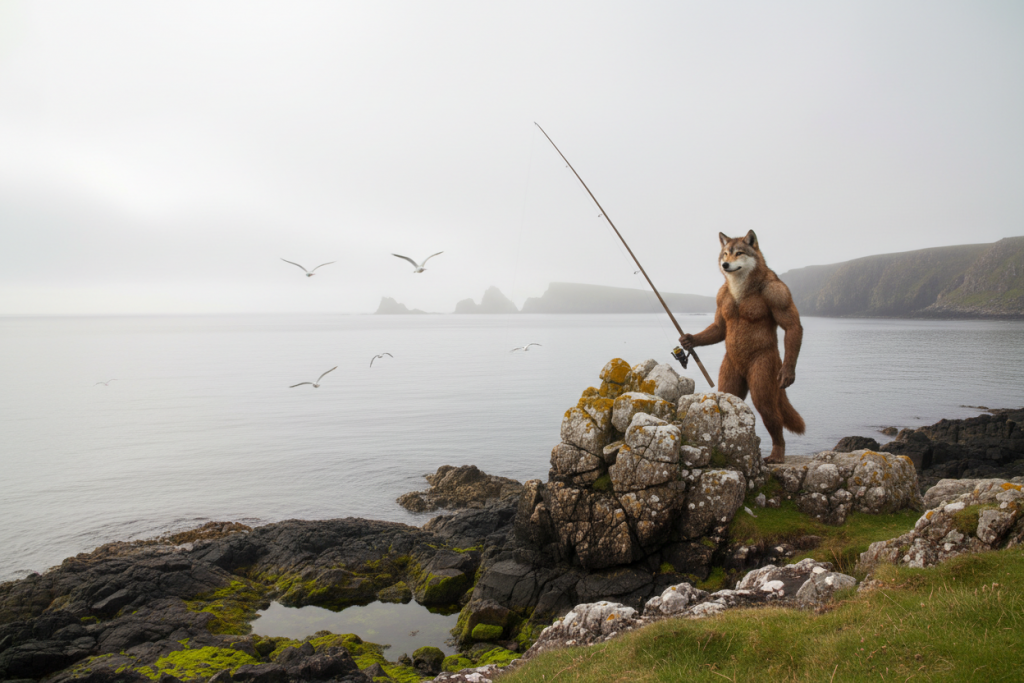Name pronunciation:
“Shee” (plural Sìthichean pronounced Shee-hee-chen)
General Information:
The Scottish Sìthichean are powerful beings, not tiny winged fairies. Most mythological creatures in Scotland fall under the category of being a sìth. They live alongside humans but follow their own rules. Highland and Lowland traditions differ, yet both stress respect and caution. Many see them as a mix of ancestor spirits, spirits of place, and echoes of old gods. Christian influence reshaped, rather than erased, older beliefs. People used these stories to explain luck, illness, strange music, lights in the sky, and the dangers of the moor, sea, and hill.
Appearance:
Glamour shapes how they look. They often appear striking, with bright eyes and abundant hair. Clothing is usually green or red, or a simple working dress. On a second look, a tell may show: a webbed finger, a hoof under a hem, or weeds in the hair of water spirits. Size ranges from small folk to human height, with rare giants in island lore. Wings do not belong to Scottish faery-kind.
Habitat:
They live in síthean (faery mounds), green knolls, caves, and hollow hills. Fords, lochs, and sea inlets also belong to them. Their halls are said to be bright and richly furnished. They forge tools, keep livestock, spin, weave, bake, and feast. Shielings, byres, mills, kilns, and known paths often sit within their concerns. Blocking a fairy path brings trouble.
Behaviour:
Most accounts describe a spectrum of behaviour rather than purely good or bad. Seelie neighbours are more likely to reward courtesy and warn of danger. However, Unseelie hosts may harm without cause or snatch the unwary at dusk. In practice, a good relationship with a sìth depends on human respect for faery taboos and reciprocity with small offerings. A being that aids one croft may spite another that blocks a track or ignores custom. The faeries dance at night, have strict rules around gifts, and dislike thanks said too directly; blessings and fair exchange are preferred. Iron repels them, while rowan, salt, and red thread are common protections, and above all, good manners are needed to keep a sìth’s favour.
Shape-shifting Ability:
Shifting shape is common. Water spirits appear as fine horses or handsome strangers. Selkies shed seal skins to walk as human. Lovers can appear as deer or mist. Glamour can bend time, so a single night within a faery knoll may become a year and a day.
Variant:
- Seelie Court: Neighbours who repay courtesy and warn of danger, yet punish insults or broken rules.
- Unseelie Court (Sluagh): A harsher host linked with illness and harm, best avoided.
- Household and pastoral: Brùnaidh (brownies), glaistig, gruagach, and bleaters, who help when respected and fed by custom.
- Water beings: Selkies, kelpies, and each-uisge, who lure people to rivers and lochs.
- Solitary and woodland: Uruisk and Ghillie Dhu, shy or stern but fair to respectful travellers.
Location in Scotland:
Faery Lore is common across the whole country, although it may be particularly associated with the Highlands and the Hebrides. However, Lowland faeries are not uncommon. Many Faeries are associated with rivers, lochs and the sea, while others live on the land in proximity to humans.
Stories/ Sightings or Experiences:
The Heavenly Dancers and the Death of Eangarra
The Nimble Men were giant faeries who danced the sky. They were called Na Fir Chlis, the Nimble Men. Their women were the Merry Maidens. Two clans faced each other that night. Eangarra led the white-clad dancers. Suilean-Uaine led those in yellow, red, and green. Brèagha was the fairest of the Maidens. She loved to dance with Eangarra. One night after dancing in the winter sky, Eangarra knelt and asked for Brèagha’s hand. She accepted with joy and without fear.
Suilean-Uaine heard and burned with jealousy. He ordered his men to draw swords. The sky split with colour and steel. Some faeries fell into the sea. They became the Blue Men, kelpies, and selkies. Seonaidh, God of Seaweed, ruled them. Others crashed on the moor and mountain. They became brownies, glaistig, and the bean-nighe. Day and Night gained their kings. When the clash ended, Eangarra lay dead. Suilean-Uaine smirked and demanded marriage. Brèagha screamed and refused him. She called Eangarra’s men to arms. The battle began again in fury. People say the aurora shows that fight. They are the Heavenly Dancers, still at war.
The Forester and the White Hart (Ruthven, Badenoch)
A forester marched with Argyll’s levy, during which time a white hind shadowed him. It kept to the fire’s edge. He spoke to it softly at dusk and left a sip of ale nightly. The men joked and called him foolish. Near Ruthven Castle, the officers set a trap. The chief ordered the hind to be shot. The forester was forced to fire but he warned it would be his last. He pulled the trigger and dropped dead. The hind cried once and vanished. Some said she was his faery wife and that her home was the Fairy Corrie. A lament was heard on the hills. It was his sìth bride keening for her husband buried far away.
The Arran Husband and the Oatmeal Charm (Isle of Arran)
A married man kept a secret tryst with a dark-haired woman he met each gloaming. She would not share her name with him but sat by a stream and watched him work. His luck rose, yet he grew thin and his wife, watching, saw the change and worried. She went to a wise woman for help. The advice was plain and old. Dust fine oatmeal on his back. Do it as he leaves for the door. Wordlessly, his wife followed the instructions. The husband reached the stream as light faded. Suddenly, the glamour broke like mist in the wind. Imagine his horror when he saw a grey, hungry figure waiting. Her fingers were webbed and long. Mud clung to the hem of her gown. He crossed himself and ran home, where he told his wife the truth. He never kept the tryst again.
The Fairy at the Stream and the Three Wishes (Ruthven)
A sìth washed clothes at a shallow stream beside a knoll near Ruthven. Big Meg saw her at work. Washing made the fairy visible and slow. Meg seized the sìth’s wrist and held firm. The fairy pled for her freedom, offering three wishes for her release. Meg had only daughters at home. She wished first for sons. Then, she wished to spin with skill. Next, she asked that her cows would bring forth an abundance of milk and fine calves. The fairy agreed and slipped away. In time, Meg bore seven sons, her thread ran fine and true and her cows gave rich milk and calves.
Lochan Uaine and the Green Water (Glen More)
Lochan Uaine sits in the shadows of the Cairngorm mountains, where its water shows a bright green tinge. People say the faeries wash there; shepherds have claimed to have seen the faeries bent over their linen in the water at dawn. Flat stones rang with quick taps as they beat their linen. When sunlight touched the water and banks, the figures slid into the heather and vanished.
Strong Malcolm’s Night Mill (Duthil and Tullochgriban)
Strong Malcolm ran a busy mill.Every evening he left grain in the hopper and when he returned at dawn, the bags stood full. No man saw who turned the wheel. Those who tried to spy and find out got kicked in the backside by an unknown power and crawled home with bloody noses. One winter night, the kiln at Tullochgriban caught fire. Thin voices rose over the melée. “Plenty of meal and sowens now.” “Malcolm must work for himself or starve.” By morning, the wheel was still. Alas, the night help never returned. People said luck had shifted. A neighbour’s loss had ended the bargain.
The Delnabo Borrowing and the Burning Kiln (Glen Avon)
A fairy woman came down from crags and knocked on a door in Delnabo. She asked for a firlot of oatmeal, declaring that it was “to feed her family.” The tenant’s wife feared offence and agreed. They stepped to the threshold together. The fairy paused and looked west. “No need,” she said at once. “Supplies have arrived from elsewhere.” Minutes later, smoke rose like a banner- a neighbour’s corn-kiln was ablaze.
Household Guardians on Arran and in Rothiemurchus
At the old Doune, a brownie worked. He swept, mended, and tidied by night, and in exchange, a bowl of cream was set out for him. One night the laird was entertaining when the brownie made a noise.The Laird shouted at the brownie, ordering him to be quiet. In the morning, the work lay half done. The helper never came back again. On Arran a brownie spoiled a guest’s food. Porridge slipped from the spoon every time. The farmer lost patience and swore. He told the unseen helper to leave. Peace returned, yet so did extra chores. Near Bennan a gruagach herded cattle. The village offered her linen and sandals. She took offence and left the district. With her went the herd’s good luck. Byres fell quiet and losses grew.
Musicians, Dancing, and Dangerous Gifts
Music draws the Sìthichean like a tide. Pipers hear reels from grassy knolls and are lured inside to play for the faery dancers. But time bends inside the Faery knolls, and a night becomes a year. Musicians return to the human world and are rewarded with enhanced musical ability or with a magical instrument. However, the gift comes with a stipulation, for nothing with the faery folk comes free. For instance, they might be told not to play it on a Sunday. One piper kept the rule for months. At a kirk-yard wedding, he slipped. On the third strain, the bag went slack. The chanter split down the wood. His gift was gone in a breath.
Changelings
Across Highland and Lowland tradition, families feared that a healthy infant might be exchanged for a fairy stock—an old being in the shape of a babe, fretful, wizened, and never satisfied at the breast. It was widely believed that unbaptised children were particularly vulnerable to being taken. People watched for sudden wasting, uncanny watchfulness, or speech beyond years.
In Strathspey, two whisky sellers visited a house where a baby cried pitifully in its cradle. The goodwife had raised it and blessed it, and, unknown to her, the blessing unsettled the Sìthichean. Later, the men found a child lying on the road and recognised it as the same child they had seen earlier. When they returned it a fortnight on, the cradle‑child had grown suddenly ill. As the men kindled a fire, the creature in the bed took the hint and shot up the smoke‑hole.
Purpose of the myth or Legend:
These stories teach safe habits and social rules. They explain lights in the sky, time slips, sudden illness, and losses at sea or farm. When dealing with faeries, these stories teach that humans need to be courteous, deal fairly, and show respect for paths and seasons. They warn against pride, prying, and careless thanks.
